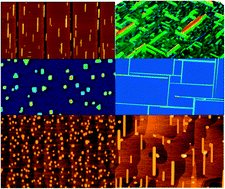Chemical solution route to self-assembled epitaxial oxide nanostructures
Abstract
Self-assembly of oxides as a bottom-up approach to functional nanostructures goes beyond the conventional nanostructure formation based on lithographic techniques. Particularly, chemical solution deposition (CSD) is an ex situ growth approach very promising for high throughput nanofabrication at low cost. Whereas strain engineering as a strategy to define nanostructures with tight control of size, shape and orientation has been widely used in metals and semiconductors, it has been rarely explored in the emergent field of functional complex oxides. Here we will show that thermodynamic modeling can be very useful to understand the principles controlling the growth of oxide nanostructures by CSD, and some attractive kinetic features will also be presented. The methodology of strain engineering is applied in a high degree of detail to form different sorts of nanostructures (nanodots, nanowires) of the oxide CeO2 with fluorite structure which then is used as a model system to identify the principles controlling self-assembly and self-organization in CSD grown oxides. We also present, more briefly, the application of these ideas to other oxides such as manganites or BaZrO3. We will show that the nucleation and growth steps are essentially understood and manipulated while the kinetic phenomena underlying the evolution of the self-organized networks are still less widely explored, even if very appealing effects have been already observed. Overall, our investigation based on a CSD approach has opened a new strategy towards a general use of self-assembly and self-organization which can now be widely spread to many functional oxide materials.

- This article is part of the themed collection: Nucleation and crystallisation

 Please wait while we load your content...
Please wait while we load your content...